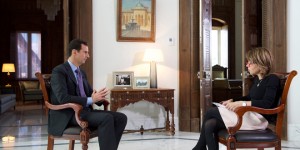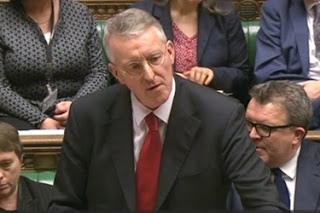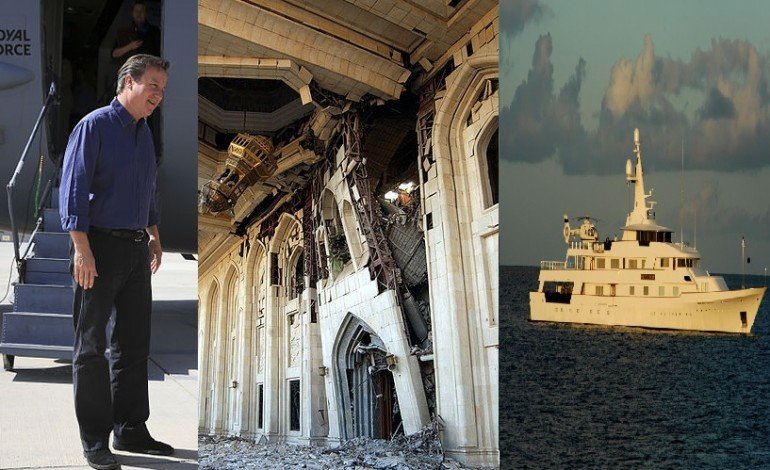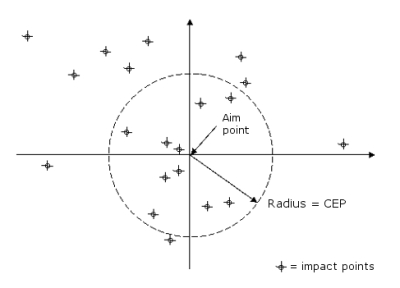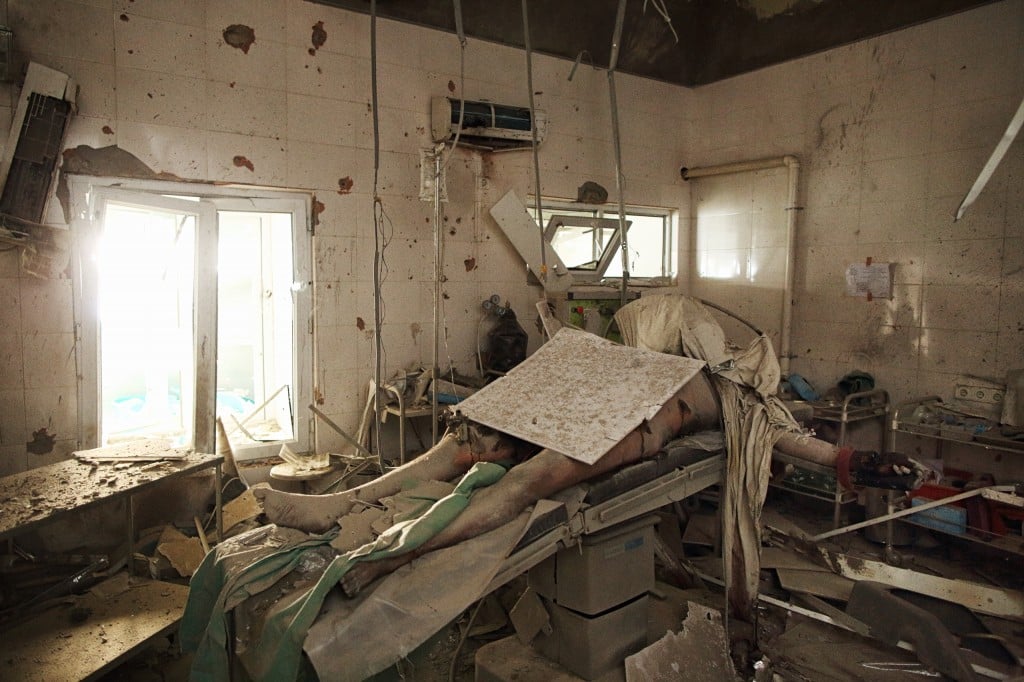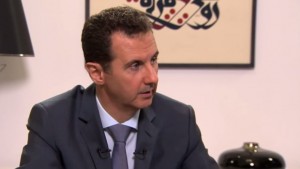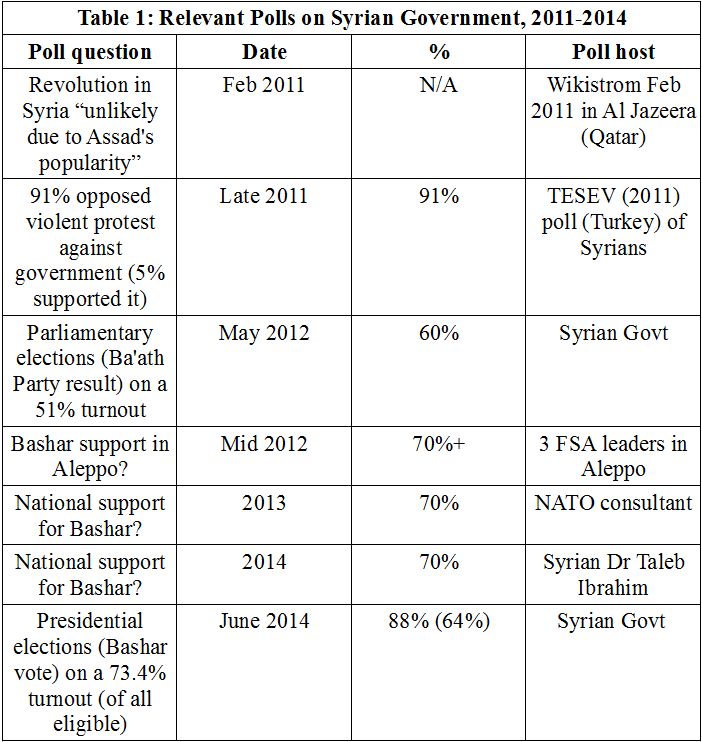“Guns And Butter” Entrevista com Michel Chossudovsky
Michel Chossudovsky mais recente investigação sobre o terror ataque em Paris, alegadamente feito pelo Estado Islâmico, ISIS, assim como o do Radisson Hotel em Bamako, no Mali, é discutida na entrevista que poderá ser lida aqui nesse relatório..
Essa é uma análise do estado atual do financiamento do terror dentro de um quadro da geopolítica global e da estrutura econômica..
Os tópicos incluem:
- A contradição fundamental que se encontra nas bases da narrativa oficial da guerra contra o terror de maneira geral e mais especificamente contra o Estado Islâmic, ou ISIS.
- Estado islâmico, uma criação da inteligência norte-americana;
- A agenda geopolítica; a militarização da África; a Conferência de Berlim no final do século 19;
- A presciência do ataque – Paris terror;
- Escalada militar da França contra a Síria foi planejada antes dos ataques atuais;
- A replicação do discurso de 9/11 como um pretexto para justificar uma nova onda de bombardeios contra a Síria;
- Ataque por uma potência estrangeira justifica um estado de guerra;
- A Doutrina de Segurança Coletivo, o Artigo 5 da OTAN;
- A comunidade Muçulmana submetido a uma caça às bruxas; a criminalização do estado e o sistema financeiro;
- O fim da República francesa.
Transcrição completa da entrevista abaixo.
“GUNS AND BUTTLER”
Full Transcript of Interview below (scroll down)
Bonnie Faulkner
Foi Ao Ar: em 25 de novembro de 2015
Transcrição:
Aqui fala “Guns and Butter” –
Prof. Michel Chossudovsky – “Mas a coisa é que para aplicar uma agenda imperial, você tem que sucatar a república. Júlio César entendeu isso perfeitamente bem. Eu não consigo lembrar a citação exata, mas ele disse que não se pode construir um império sem acabar com a república. Eu acho que, na verdade, o que está acontecendo é que a república está sendo desmantelada. Ela não está sendo descartada só na França; ela está sendo descartada na América também.”—Michel Chossudovsky
Aqui fala Bonnie Faulkner. Hoje em “Guns and Butter“. Com Michel Chossudovsky. Apresentando aqui, “O terrorismo de stado: estilo franco-americano.”
Michel Chossudovsky é economista assim como o fundador, diretor e editor do Centro de Investigação sobre a Globalização com base em Montreal, Quebec. Ele é autor de 11 livros, incluindo A Globalização da Pobreza e a Nova Ordem Mundial, a Guerra e a Globalização, A Verdade por trás do 11 de setembro, Guerra da América contra o Terrorismo, e A Globalização da Guerra: A Longa Guerra da América contra a Humanidade. Hoje vamos discutir seus artigos mais recentes sobre a alegada responsabilidade ISIS no ataque terrorista em Paris, assim como no Radisson Hotel em Bamako, Mali, uma ex-colônia francesa. Vamos analisar o actual estado do patrocínio do terror dentro de um quadro da geopolítica global assim como da estrutura econômica.
Bonnie Faulkner : Michel Chossudovsky, benvindo.
Michel Chossudovsky : Tenho muito prazer de estar em “Guns and Butter”.
Bonnie Faulkner : Em 13 de novembro de 2015 tiroteios e atentados suicidas ocorreram em cinco localidades diferentes em Paris, capital da França. Cento e trinta pessoas foram mortas. Menos de uma semana depois dos ataques em Paris um grupo de pistoleiros fortemente armados invadiu o Radisson Blu Hotel em Bamako, capital do Mali, ex-colônia francesa. Nesse ataque foram mortas 21 pessoas. Houve uma recente sequência de ataques terroristas. Entre esses tem-se os bombardeios em Beirute e a derrubada do avião russo de passageiros sobre o deserto do Sinai. Onde você acha que nós deveríamos começar na nossa tentativa de responder as perguntas que se precipitam por causa de todos os recentes ataques terroristas?
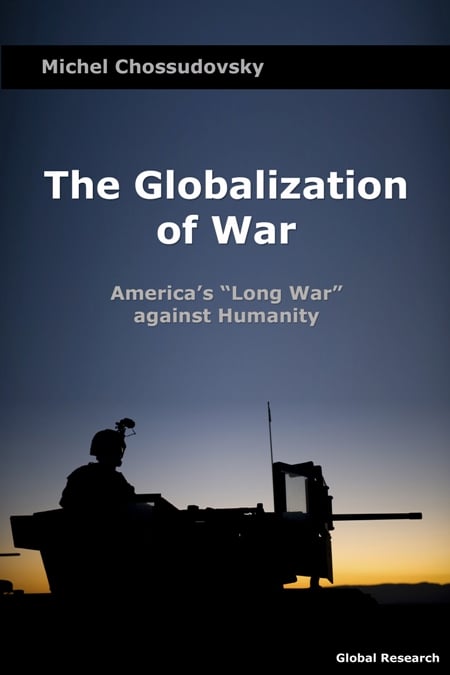
(Clique na imagem para encomendar Chossudovsky livro diretamente a partir de Pesquisa Global)
Michel Chossudovsky – Eu acho que há uma contradição fundamental na narrativa oficial, tanto dos Estados Unidos e, é claro, da França e seus aliados. Os Estados Unidos dizem estar conduzindo uma guerra contra o terrorismo e contra o chamado Estado Islâmico, mas a evidência confirma que o Estado Islâmico, e várias outras organizações terroristas relacionadas a al Qaeda, são criações dos seviços de inteligência dos EUA. Eles são o que na linguagem dos serviços secretos se denomina como “nossos bens e ativos”.
Uma outra dimensão é que na verdade Obama não está desenvolvendo uma campanha contra os terroristas, porque esses terroristas são, na verdade, os soldados da Aliança Militar Ocidental na Síria. Na verdade, eles estão protegendo os terroristas. Isso foi amplamente confirmado. O início do bombardeio russo chamou a atenção para esse fato porque os Russos estão indo contra os verdadeiros terroristas.
Quando uma ocorrência como a de Paris ou de Bamako é apresentada à mídia o que essa faz é simplesmente copiar e colar o oficial da narrativa, sem a apresentação de uma análise ou de uma compreensão do que na verdade sucedeu, ou mesmo de um histórico dos acontecimentos, o que no caso seria também o que estaria por trás destas organizações terroristas. Quase que imediatamente na sequência dos ataques terroristas em Paris a mídia francesa entrou em estado de atividade acelerada indicando inequivocamente – e isso foi até mesmo antes do conduzir de uma investigação da polícia – que o Estado Islâmico estava indiscutivelmente por trás destes ataques.
Na sequência dos ataques o presidente François Hollande ordenou por decreto o estado de emergência nacional, a suspensão das liberdades civis, o direito de entrar nas casas das pessoas e prender a quem lhes interessasse e isso sem mandatos especiais. Ao mesmo tempo fecharam-se as fronteiras. Se bem me lembro tudo isso foi anunciado poucos minutos antes da meia-noite, no dia 13 de novembro, hora local, antes de qualquer consulta com o seu gabinete e colegas. Na verdade ele confirmou que a reunião de gabinete teria lugar posteriormente. Em seu discurso ele disse que: “Nós sabemos quem eles são.” Imediatamente a mídia francesa passou a dizer que esse seria o estilo francês do 9/11 dos EUA. Em outras palavras. – “Le 11 Septembre à la Française.” – A seguir a história oficial prevaleceu.
A história oficial é baseada, como acima mencionado, numa contradição fundamental. Você não pode, por um lado, dizer que é vítima de Estado Islâmico, quando, na verdade, você é o criador do Estado Islâmico. É um non sequitur. Você não pode dizer que os ataques – e ele foi muito explícito – foram de fora da França, originários da Síria, sem apresentarprovas convincentes. Você não pode dizer que os ataques originados da Síria foram dirigidos contra a república francesa e ao mesmo tempo em que suporta, secretamente, esses mesmos terroristas. Há amplas evidências de que não apenas os Estados Unidos e seus aliados, mas também a França têm apoiado a ISIS e seus grupos afiliados, tais como o Grupo de Combate Líbia Islâmica, com armas, treinamento, financiamento e assim por diante.
O público francês assim como o público dos países ocidentais em geral tem sido levados a acreditar que os terroristas estão envolvidos em crimes contra a humanidade sem perceber que, na verdade, seus serviços de inteligência, que estão sob os auspícios de um governo eleito, estão a manipular essas organizações terroristas, assim como a apoiá-las, fornecendo-lhes armas e tudo o mais.
Bonnie Faulkner : Você escreve que o alegado arquiteto dos ataques de Paris, tinha sido originalmente um al Qaeda afiliado, e que essa entidade terrorista tinha sido criada pelos serviços de inteligência dos EUA com o apoio da MI6 da Grã-Bretanha, da Mossad de Israel, do ISI do Paquistão, Inter-Services Intelligence, e da GIP da Arábia Saudita, ou seja da Inteligência Geral da Presidência. Você escreveu que, “desde o início a campanha de bombardeios de Obama que começou em agosto/setembro de 2014, tinha nos conduzido a coalizão, e que essa não bombardeava as posições do Estado Islâmico, ISIS.” Teria toda essa campanha sido falsa?
Michel Chossudovsky : Bem, absolutamente. Esta é uma auto-proclamada campanha de luta contra o terrorismo, mas na verdade ela serve mesmo é para justificar o bombardeio de um país soberano em derrogação do direito internacional. Os Estados Unidos pressionam o governo de Bashar al-Assad a renunciar. Eles querem uma mudança de regime, o que eles não foram capazes de conseguir apesar de quatro anos de intensas atividades terroristas que eles vêm patrocinando. Quanto ao último ano – nós estamos falando aqui sobre os bombardeamentos de raids que duraram 13 meses ou mais – esses foram para apoiar as entidades terroristas.
Agora, poderiam me perguntar de onde eu tirei as informações do que estaria por trás desses terroristas. Nesse caso eu poderia dizer-lhes que desde os primeiros dias, em março de 2011, os terroristas tinham sido enviados para a área com o apoio da Aliança Militar Ocidental. Na verdade, isso foi relatado em agosto de 2011 pelo DEBKA, que é uma inteligência de mídia on-line. Eu não estou dizendo que eu confio na fonte DEBKA, mas nela se reconhecia de forma muito clara, o que foi corroborado por outros estudos, ou seja, que a iniciativa da Aliança Militar Ocidental, na verdade, tinha sido lançada pela OTAN e que essa consistia na criação de uma campanha para alistar milhares de voluntários Muçulmanos em países Muçulmanos. A atividade deveria ser coordenada pela OTAN, em Bruxelas, e pelo alto comando turco, e isso foi exatamente o que aconteceu.
Levou um bom tempo para a opinião pública perceber que as chamadas forças de oposição contra o governo de Bashar al-Assad na verdade eram forças terroristas. Então, quando as atrocidades começaram eles invariavelmente diziam que era Bashar al-Assad a matar o seu próprio povo enquanto a mídia ocidental esteve sempre lá para acusar.
Bem, nós temos informações suficientes para saber que esta assim chamada guerra contra o terrorismo é uma farsa. Os Estados Unidos e seus aliados estão envolvidos em uma criminosa atividade de violação do direito internacional e numa violação dos direitos de um país soberano. Trata-se de geopolítica e de conquista econômica. Eles estão usando a guerra contra o terrorismo como pretexto. Na verdade a campanha de bombardeios veio realmente como resposta ao fato de que as forças do governo sírio em 2014, tinham conseguido pacificar uma grande parte do seu território. Tem-se então que muitas bolsas terroristas tinham foram eliminadas. Foi por isso que a campanha de bombardeios foi iniciada. Depois ainda vieram o recrutamento e a formação de terroristas a partir da Arábia Saudita, do Qatar, e ainda de outras partes.
Tudo isso é conhecido e o que acontece é que a mídia ocidental vai, ao fim e ao cabo, reconhecer o fato de que a Turquia é responsável por isso, aquilo e aquilo outro, que na Arábia Saudita não se pode confiar e que eles estão apoiando os terroristas. Do Qatar dirão que esses também estão a apoiar os terroristas. Mas é claro que os mesmos não dirão que os próprios países ocidentais estão a apoiar os terroristas e que esses seus aliados estão obedecendo ordens. O Qatar não é realmente um país; é um proxy-estado do Golfo pérsico. Ele obedece ordens.
Há toda uma série de bases militares e de inteligência perto de Doha, capital do Qatar.
Na Arábia Saudita é o mesmo. Estes são os países que estão alinhados com Washington. Eles recebem ajuda militar. EUA lhes diz o que devem fazer ou não. Historicamente, indo de volta a guerra entre a União Soviética e o Afeganistão, sabemos que o serviço de inteligência militar do Paquistão, o Inter-Services Intelligence, ISI, e seus homólogos da Arábia Saudita eram os financiadores desta operação e que eles recrutavam terroristas. Tudo isso foi confirmado por Brzezinski e muitos outros. Tudo isso é conhecido. A CIA não o nega. O que eles dizem, é claro, é que depois da Guerra Fria, eles terminaram a sua relação com a al Qaeda e que a mesma então tinha se voltado contra nós, por assim dizer.
Este é um disparate absoluto. Por um lado os terroristas continuam a ser treinados no Afeganistão e no Paquistão. Na verdade Belmokhtar, o proclamado arquiteto do recente bombardeio de hotel em Bamako, foi recrutado pela CIA, em 1991. A guerra Soviética-Afegã, já terminou, assim também como a guerra fria, mas a CIA continua a recrutar essas pessoas.
Quem estão eles a recrutar?
Eles recrutam, entre outras coisas, potenciais para os serviços de inteligência a serem implantados em um número de países da ex- União Soviética. Claro que aqui entra também a Federação Russa e a Chechênia, mas recrutam ainda por ex. para o Oriente Médio. BelMokhtar, do recente ataque em Mali, foi treinado no Paquistão e no Afeganistão pela CIA e, em seguida, ele foi enviado de volta para a Argélia, em 1993. Hoje em dia ele está atrás de uma fração do que é conhecido como a Al-Qaeda no Magrebe Islâmico. A operação em Bamako foi , alegadamente, realizada pelo seu grupo e a organização mais ampla, a acima denominada al-Qaeda no Magrebe Islâmico, AQIM, ela mesma uma afiliada da al Qaeda.
Devo mencionar que AQIM está também muito integrado com a chamada Libya Islamic Fighting Group (LIFG), que foi apoiada pela OTAN, durante a campanha da OTAN contra a Líbia, em 2011, de modo que a OTAN apoia esse Grupo Líbio de Combate Islâmico (Libya Islamic Fighting Group (LIFG) que, na verdade, tem mais ou menos conjuntamente com AQIM, o arquiteto do ataque terrorisra em Bamako, Mali, ou seja, a mítica figura de Belmokhtar, o recrutado tornado arquiteto do recente ataque em Mali, que como acima mencionado, foi treinado pela CIA.
A CIA está por tudo, e eles não negam, porque as provas são muito convincentes. Os serviços de inteligência dos países ocidentais estão a apoiar os terroristas ao mesmo tempo que os governos desses países ocidentais desenvolvem campanhas militares supostamente para combater o Estado Islâmico, quando na verdade, eles estão também a apoiar o mesmo. Eles usam isso tudo como pretexto para bombardear um país soberano o que resulta em dezenas de milhares de vítimas, em crises de refugiados, na destruição de cidades inteiras. Tudo isso e muito mais. Na Síria isso já vai a mais de quatro anos.
Não precisamos começar a nos engajar em qualquer tipo de teoria conspiratória para sublinhar o fato de que os serviços de inteligência da França e os Estados Unidos estão a apoiar ISIS, e que ISIS é designado como ameaça à segurança da nação francesa. Há aqui naturalmente uma contradição óbvia. Não se pode suportar a ISIS e, em seguida, fazer um discurso a meia noite – estou falando sobre o Presidente Hollande – e dizer que ‘Nós sabemos quem eles são, que eles estão nos atacando, e que estão matando nosso povo.’ Eu acho que, para dizer o mínimo, o Presidente François Hollande tem sangue em suas mãos.
Eu estou falando com o economista e diretor do Centro de Investigação sobre a Globalização, Michel Chossudovsky. Hoje, “O terrorismo de estado: estilo franco-americano. Fala Bonnie Faulkner. Esta é “Guns and Butter”.
Bonnie Faulkner : Agora, você está se referindo a Bamako, dos ataques a Mali, os mais recentes ataques terroristas. As notícias relatam que as operações terroristas de Bamako foram coordenadas por Mokhtar Belmokhtar, a quem você mencionou. Na sua opinião qual seria a importância dos ataques em Bamako? Foram esses ataques em Bamako, Mali, relacionados com os de Paris? Por exemplo, qual foi o papel da França na guerra contra a Líbia de então e na queda de Muammar Gaddafi? O que representa tudo isso?
Michel Chossudovsky : Deixe-me colocar desta forma. Tanto os ataques de Paris, assim como os de Bamako têm implicações geopolíticas. Primeiro, com relação a Paris, vale a pena notar que uma semana antes destes ataques ocorrerem o governo Hollande havia ordenado o uso do Charles de Gaulle porta-aviões, do grupo para o Mediterrâneo oriental, como apoio da suposta campanha contra o terrorismo na Síria. Isso mostra que mesmo antes dos ataques ocorreram eles já estavam se preparando para enviar esta poderosa marinha com a sua força aérea de ataque para o Oriente Médio para apoio da campanha de Obama contra a ISIS.
Seguindo os ataques de Paris, como podemos nos lembrar, a força aérea francesa comunicou que tinha bombardeado a sede da ISIS, na Síria. Na declaração oficial do Ministério da Defesa foi dito depois que todos os ataques tinham sido orientados contra os postos de comando dos terroristas. Entretanto, nós temos informações da Síria que, de fato, os alvos atingidos por esses ataques foram clínicas de saúde, um museu e o estádio; em outras palavras, a infra-estrutura civíl do país. Ataques contra a infra-estrutura civíl da Síria tinham continuado e persistiram também no ano passado, de quando os Estados Unidos começaram seus próprios bombardeios contra a Síria.
Agora, com relação a Bamako a agenda geopolítica é essencialmente a de criar um pretexto e uma justificação para a intervenção da França e dos Estados Unidos na África Sub-Sahariana. Eles estariam direcionando suas ações, supostamente é claro, contra organizações terroristas que ameaçavam governos parceiros na África – o que é absurdo, porque eles controlam essas organizações terroristas, seja ela a Al-Qaeda no Magrebe Islâmico, ou Boko Haram na Nigéria, ou o Grupo de Combate da Líbia Islâmica (LIFG). Todas essas organizações fazem parte dos “bens e ativos de inteligência”, ou seja capital humano, os quais estão sendo usados para desestabilizar países soberanos.
Os ataques terroristas de Bamako serão sem dúvida utilizados pela França e pelos Estados Unidos para re-colonizar a África em termos de militarização de todo o continente, indo do controle dos recursos, a desestabilização da ordem pós-colonial da sociedade, e muito mais. Isso eles o estão fazendo através de vários mecanismos. Eu suspeito que a geopolítica subjacente aos ataques terroristas em Bamako é a militarização da África. Devo mencionar que a USAFRICOM, ou seja, o comando africano dos americanos, também enviou um contingente a Mali para ajudar as forças especiais dos franceses e os malineses as quais tinham invadido o hotel, durante os acontecimentos relacionados aos ataques. Nós acreditamos que esse Comando-África, ou seja o US-AFRICOM é a chave mestra para a militarização da África.
Devo mencionar aqui também que François Hollande é, na verdade, um instrumento dos Estados Unidos. Ele age em nome de Washington, que não tem absolutamente nenhum interesse em realmente proteger esferas de influência dos francêses na África Ocidental, por exemplo. A aliança com os Estados Unidos – é uma aliança de subordinação. A França está subordinada a Washington – e isso é, na verdade, para preparar o nosso caminho em direção a nossa colonização do continente africano, que, historicamente, recordemos, foi realmente colonizado pelos europeus. No final do século 19, na chamada Conferência de Berlim a África foi dividida e esculpida em diferentes partes e secções, mas a América não estava incluida no processo.
Agora, o que vemos emergir é, na verdade, o deslocamento das antigas potências coloniais da e na África. As ex-colônias de Portugal, Espanha, Bélgica e agora da França serão, em última análise, deslocadas para os Estados Unidos. Países francófonos estão a tornar-se americanizados. O dólar irá eventualmente substituir o franco CFA, que é um proxy moeda vinculada ao tesouro francês, mas amarrada em euro.
Eu acho que esse é o cenário que se apresenta. É a tentativa de conquista do continente africano pelos americanos. Isso está se tentando fazer através do auto-proclamado mandato do governo de Obama para ir atrás dos terroristas na África Sub-Sahariana. Aqui tem-se então o Boko Haram, AQIM, e muitos outros grupos terroristas no continente, que como mencionado acima, são a ser categorizados como “bens e ativos” – capital humano – dos que estão fazendo isso nas diversas áreas africanas, onde pretendem expandir sua zona de influência.
É claro que, no Sudeste da Ásia tem-se a Jamiya Islami (JI) na Indonésia e na Malásia e depois naturalmente, várias outras organizações jihadistas, na parte ocidental da China, que estão envolvidas, novamente, em rebeliões. Todas apoiadas pelos serviços de inteligência ocidental através do ISI do Paquistão.
Bonnie Faulkner: Parece que os Estados Unidos e a França estão trabalhando muito estreitamente sendo que há evidências de que a escalada militar francesa dirigida contra a Síria foi planejada antes dos ataques terroristas do 13 de novembro. Que provas existem, se houverem, da presciência oficial de Paris quanto aos ataques terroristas?
Michel Chossudovsky: Você está absolutamente certo . A França tem participado em ataques bombardeiros desde o início. Ironicamente, eles operam dos Emirados Árabes Unidos, o qual não só hospeda como também treina organizações terroristas.
Com relação à presciência, eu não quero, necessariamente, lidar com isso nesses termos, mas tem certos eventos que eu considero como reveladores. O fato de que cerca de um mês e meio antes dos ataques em Paris havia um certo artigo no Paris Match, que é um tablóide, uma revista que amplamente lida e que lidera quanto a dar o tom a ser seguido. Neste artigo do Paris Match afirmava-se que dentro de um curto período de tempo, iria haver um ataque terrorista. Eles usaram o termo “9/11 de estilo francês, ou em francês “La 11 septembre à la française.” Esse era também o título do artigo. “O 11 de setembro à francesa”.
O Paris Match no dia 2 de outubro previu um ataque terrorista na França semelhante ao dos Estados Unidos em 11 de setembro de 2001, mas de estilo francês então. Eles disseram que os ataques na França seriam numa escala comparável à do 9/11 nos Estados Unidos. Eles também disseram que os serviços de inteligência preocupavam-se com a possibilidade de um 9/11, de estilo francês. Então você pode agora se perguntar qual teria sido o propósito desta reportagem. Seria o caso de mídia desinformação? Estaria ele lá para criar uma atmosfera de medo e de intimidação antes dos acontecimentos a virem?
Ironicamente, quando os eventos realmente ocorreram a mídia simplesmente reafirmou o que tinha sido dito acerca de um mês e meio atrás. Eles disseram: ‘este é um ataque terrorista semelhante a 9/11.’ Eles também apontaram o presumido culpado imediatamente, não como presumido, mas como certo e isso sem qualquer tipo de prova. Afirmaram categóricamente em unisono que estes ataques vinham da Síria. Então, como podemos recordar, alguns dias mais tarde o presidente francês depois de ter declarado um estado de emergência nacional começou a afirmar:- “este é um ato de guerra contra nós”, apesar do fato desse não ser um ato de guerra. O que aconteceu deve ser categorisado como um ato terrorista, não como um ato de guerra. Entretanto o presidente da França descreveu o acontecimento como um ato de guerra. Ele disse que a França estava sendo atacada por uma potência estrangeira, e que essa potência estrangeira estava localizada no norte da Síria, em alguma parte em Raqqa.
Isso é o mesmo que dizer:- … acontece apenas que apoiamos esses terroristas, mas temos de invocar, em um sentido, o fato de que estamos sendo atacados de fora, por uma potência estrangeira, para que possamos em seguida então afirmar com nossos parceiros de coalizão da OTAN e da União Europeia a doutrina da segurança coletiva.
Esse é então o Artigo 5 da NATO, que diz que um ataque contra um membro da OTAN é um ataque contra todos os membros da OTAN. Isso foi exatamente o que os americanos invocaram, em 12 de setembro de 2001, na sequência do ataque de 9/11. Eles dizeram que era um ataque contra os Estados Unidos a partir do estrangeiro – apesar de não se ter visto nem testemunhado qualquer que fosse avião afegão, ou nem mesmo quaisquer outros aviões estrangeiros fora de rota nos céus de Nova York.
A França está fazendo exatamente o mesmo. Eles estão replicando o discurso de 9/11 dizendo que este é um ataque a partir de uma potência estrangeira; acontece apenas que essa potência estrangeira é no norte da Síria, em algum lugar. Estão usando isso como pretexto para escalar a guerra contra a Síria, e não contra os seus próprios proxy-terroristas em Raqqa. Fazem isso então para justificar uma nova onda de bombardeios pelas forças da coalizão. Eu acho que essa é, em última análise, a ordem do dia.
Eu estou falando com o economista e diretor do Centro de Investigação sobre a Globalização, Michel Chossudovsky. Hoje, “O terrorismo de estado: estilo franco-americano”. Eu sou Bonnie Faulkner. Da “Guns and Butter”.
Michel Chossudovsky : Então eles têm que enfrentar a Rússia, porque a Rússia está indo contra os verdadeiros terroristas. Eu acho que uma das dimensões dos ataques de Paris é que a coalizão precisava de um mecanismo, ou um pretexto, para minar os empreendimentos da Rússia que consiste essencialmente em destruir os soldados da Aliança Militar Ocidental, que são os terroristas – essas várias entidades, que são apoiadas secretamente pela CIA, MI6, Mossad, e que são integradas por forças especiais em permanente articulação com a Aliança Militar Ocidental. Estes soldados têm seus comandantes e os comandantes também cooperam com a OTAN e os Estados Unidos.
O fato é que Israel também está por trás dos terroristas e nem se precisa especular sobre isso. Eles realmente dizem que tem uma facilidade nas colinas de Golã. Eles estão levando terroristas feridos da Síria às colinas de Golã, onde tem suas instalações hospitalares. As formações terroristas tem consultores israelenses. Temos photo ops de Netanyahu com comandantes terroristas tendo tratamento hospitalar nas colinas de Golã.
O problema é que o que estamos discutindo aqui não terá cobertura na mídia. O público está sendo asfixiado abaixo de uma avalanche de discursos humanitários. Pessoas inocentes estão sendo mortas e os terroristas continuam a atacar pessoas inocentes, o que, em última análise, cria dentro de todos nós um sentimento de solidariedade com as vítimas, mas também um sentimento de medo. Quando a morte se manifesta, nós sentimos.
Então o que fazemos é correr para o lado do governo. O que é que todos na França estão fazendo? Todos compactuam com o governo francês. Mesmo as pessoas que odeiam François Hollande estão a compactuar com o governo francês, porque o governo francês está lá para protegê-los, e as pessoas estão chocados e preocupados com tanta perda de vida.
Esse conceito, ou melhor, esse procedimento como que automático, está bem estabelecido em nós como seres humanos, e daí vem a doutrina militar. Eu deveria lembrar os ouvintes a respeito da chamada “Operação Northwoods”. Essa doutrina viu a luz do dia durante a administração Kennedy. A doutrina contida na denominada “Operação Northwoods” motivou um plano secreto feito pelos Chefes do Estado Maior – Joint Chiefs of Staff – para começar a matar pessoas na comunidade cubana em Miami, assim como em Washington próprio, com vistas a justificar uma guerra de retaliação contra Cuba. Gostaria de citar o documento oficial. Eles diziam que iriam começar a matar pessoas em Miami e que isso iria criar “úteis ondas de indignação” – Contavam então aqui com a indignação da opinião pública dos Estados Unidos, como uma reação certa, automática e natural das pessoas. Contavam então com essa reação humana natural e espontânea, mas para atingir seus próprios fins militares. Todo mundo sente indignação quando pessoas são mortas da maneira que premeditavam e pessoas fortemente indignadas desejam agir, o que faz que mais fácilmente aceitem uma declaração de guerra, por ex.
No caso de Cuba e Operação Nortwoods em seguida, e de acordo com os planos, eles iriam então dizer que Cuba, Fidel Castro, tinha atacado a América e que tinham agora que atacar Cuba em retribuição. O aqui apresentado mostra também a lógica das chamadas “falsas bandeiras”. Os documentos da “Operação Northwoods” estão lá, oficialmente. As pessoas podem ir e consultá-los, porque aqueles documentos secretos foram desclassificados depois de meio século, e agora então, sem dúvidas, sabemos o que os militares dos EUA estavam a pensar quanto ao caso. O planejado foi rejeitado por Kennedy assim como também recusado pelo Secretário de Defesa McNamara. A “Operação Northwoods” tinha sua fonte a partir dos Chefes do Estado Maior – Joint Chiefs of Staff, mas de certeza também que era apoiado pelos serviços de inteligência dos EUA na época.
Abaixo apresenta-se um desses documentos traduzidos livremente ao português, mas seguido do original em inglês:
DOCUMENTO –
The Joint Chiefs of Staff
[Les Chefs d´ état major – Os Chefes do Estado Maior]
Washington 25, D.C.
Não Classificado 13 de março de 1962
MEMORANDO PARA O SECRETÁRIO DE DEFESA
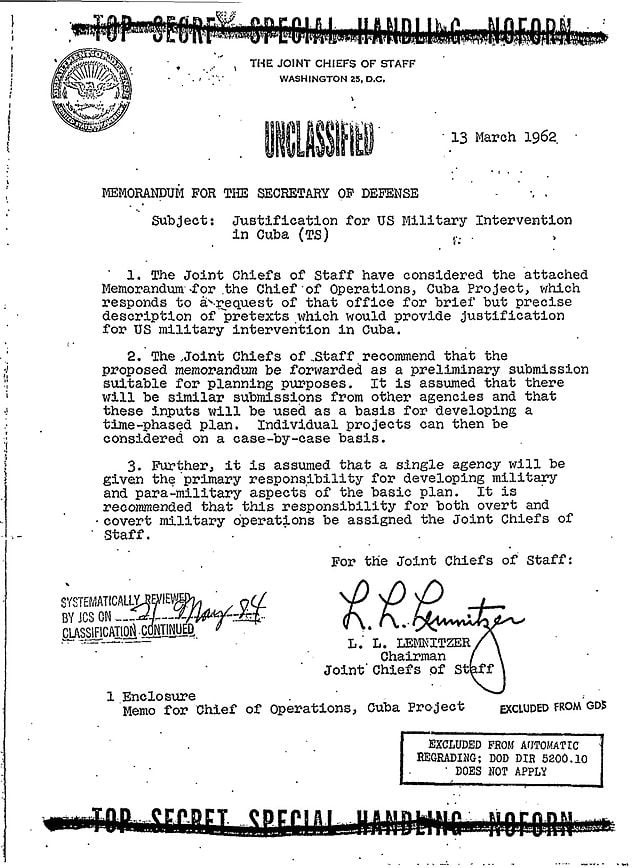
Assunto: Justificação para Intervenção dos militares dos EUA para intervenção em Cuba (TS)
- Os Chefes do Estado Maior consideraram o anexado memorando para o Chefe de Operações, Projeto Cuba, o qual responde então ao requerimento desse oficial para uma curta, mas precisa, descrição dos pretextos que poderiam apresentar uma justificação para os militares dos Estados Unidos intervirem em Cuba.
- Os Chefes do Estado Maior recomendam que o proposto memorando seja despachado como uma apresentação preliminar para fins de planejamento. Assume-se que haverão outras apresentações semelhantes vindas de outras agências e que essas serão usadas para o desenvolvimento de um plano determinando as diversas fases do projeto. Os diversos projetos poderão ser considerados em bases individuais.
- Assume-se também que a principal responsabilidade para o desenvolvimento dos aspectos militares e para-militares do planejamento básico seja dada a uma só agência. Recomenda-se aqui que a responsabilidade tanto para as operações feitas de forma aberta como para as operações secretas seja dada aos Chefes do Estado Maior – The Joint Chefs of Staff.
Para os Chefes do Estado Maior
L.L.Lemitzer
Presidente – Chefes do Estado Maior
1 Anexo – Memorando para o Chefe de Operações, Projeto Cuba.
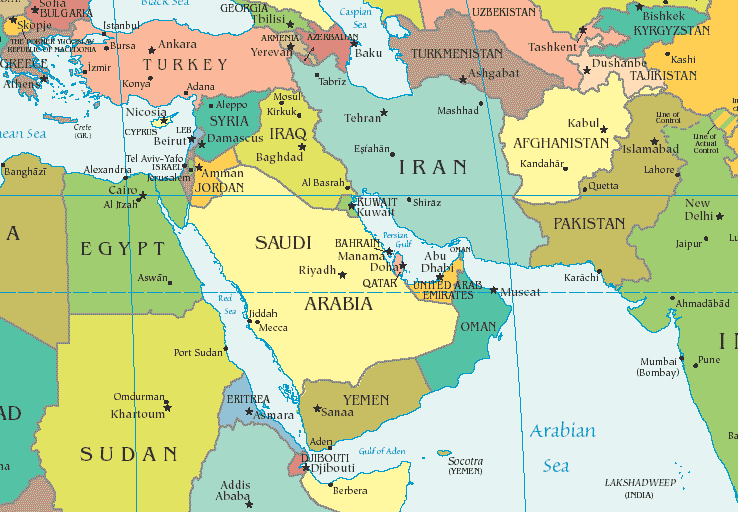
Apenas para mencionar um outro evento. O conceito é o que o General Tommy Franks, do US Central Comando (USCENTCOM), comandante responsável pela invasão do Iraque, descreveu como a possibilidade de um “evento terrorista, maciço, ou alernativamente como uma maciça produção-de-acidentes que resultem na morte de civis. Ele disse que, na verdade, ataques terroristas, ou enormes eventos tipo produção-de-acidentes, constituiria um instrumento que permitiria ao governo militarizar a situação – neste caso ele estava falando sobre os Estados Unidos – eventos e efeitos para militarizar os Estados Unidos, mas aqui tem-se também exatamente o que está acontecendo na França agora. O maciço ataque terrorista em Paris foi um evento que trouxe consequências similares aos que uma maciça-produção-de-acidentes traria. Os ataques estão sendo usados como pretexto para a declaração da lei marcial e da suspensão das liberdades civis. Isso é o que eu chamaria o fim da República Francesa. Eles marcam o fim da república francesa e o potencial de transição para um regime totalitário, disfarçado de democracia com um governo representativo.
Bonnie Faulkner : Bom que você tenha mencionado a Operação Northwoods porque realmente estamos gravando esta entrevista no dia 22 de novembro, que é o 52º aniversário do assassinato do presidente dos Estados Unidos, John Kennedy. Claro, temos visto uma guerra sem fim desde então. Em termos de cobertura da mídia os ataques terroristas de Paris parecem usar uma noção de vingança e esta está sendo usada como um fator de motivação. Claro que seria contraditório afirmar isso, certo?
Michel Chossudovsky : Você sabe, vingança – olho por olho, dente por dente – tem estado conosco há milhares de anos. No conceito histórico você precisaria de um pretexto para começar uma guerra mas a guerra no contexto moderno –e os líderes políticos sabem disso– é o crime máximo de acordo com as regras de Nuremberga. Seja qual for o motivo subjacente, a única guerra que é legalmente permitida é uma guerra que se desencadeie a partir da necessidade de auto-defesa. Você está autorizado a defender-se contra a agressão. Sem isso qualquer ato de guerra contra um país estrangeiro é um crime.
O que esses ataques e mortes de civis estão lá para realizar é um mandato para o governo [dos EUA ou da França] iniciar uma guerra de retaliação contra um país estrangeiro – no caso aqui, a Síria, mesmo que eles não estejam abertamente e oficialmente dizendo que o governo sírio esteja atrás de terroristas que atacaram Paris. Eles provavelmente vão começar a dizer isso abertamente em um certo ponto – quando, na verdade, sabemos que Bashar al-Assad tem lutado arduamente contra o terrorismo, e isso já a partir dos meados de março de 2011. É uma batalha de forças do governo sírio contra o terrorismo mas os terroristas estão sendo apoiados por potências estrangeiras, de modo que, certamente, a Síria poderia legalmente chamar uma sua reação, quanto a uma guerra, de auto-defesa. [250.000 mortos na Síria – 130 na França]
Mas para a França invocar auto-defesa, alegando que ela foi atacada por alguns indescritível entidade no norte da Síria é, no mínimo, exagero. Entretanto parece que as pessoas estão comprando isso dizendo, sim, temos que agir. É um ato de vingança.
Uma outra dimensão aqui é que em toda a França a polícia está em frenesi e exaltação, se não fúria. Temos números oficiais quanto ao número de raids em casas particulares e quanto a buscas e prisões, entre outras atividades, mas nenhum desses números oficiais deveriam ser realmente levados a sério, porque o que está acontecendo mesmo agora é que a comunidade Muçulmana da França, que representa 7,5% da população, está sendo submetido a uma caça às bruxas. Estamos em uma situação que poderia ser chamado de Inquisição espanhola, se bem que seja necessário mencionar que historicamente a Inquisição francesa da Idade Média foi muito pior do que a espanhola.
É assim que a situação se apresenta. Estão indo atrás das pessoas, de uma maneira inquisitória. A onda de anti-terrorismo converge com a Islamofobia. Em última análise isso seria bastante lógico a partir de uma geopolítica ou do ponto de vista econômico do poder. Os Muçulmanos estão sendo demonizados porque o que acontece é que os Muçulmanos são os habitantes de países que possuem as reservas de petróleo do mundo.
De acordo com os meus cálculos 65% a 70% das reservas de petróleo bruto no mundo – e eu não estou falando sobre o gás natural ou outras formas de óleo como a tar sands – estão em países Muçulmanos, dos quais grande parte fica, claro, na região que se estende da ponta da Arábia Saudita, até a bacia do Mar Cáspio. Se aqueles países que possuem essas reservas de petróleo fossem Budistas, toda a campanha seria dirigida contra os Budistas. Eles precisam de demonizar os Muçulmanos como um pretexto para suas batalhas pelo petróleo.
Bonnie Faulkner : E, claro, o que começa como um demonizar dos Muçulmanos, ou qualquer que seja o grupo, em última análise acaba por cair em todo mundo, sobre a população em geral. Você mencionou que o estado de emergência tinha sido declarado na França. Tem-se medidas drásticas da polícia nesse estado de emergência, com prisões arbitrárias, entre outras coisas. Você mencionou também que estaríamos testemunhando o fim da república francesa.
Michel Chossudovsky : Absolutamente, mas a coisa que está implícita aqui é que para cumprir uma agenda imperial, você tem que sucatar a república. Agora, Júlio César entendeu isso muito bem. Eu não consigo lembrar a citação exata, mas ele disse que não se pode construir um império com a república. Eu acho que, na verdade, o que acontece é que a república está a ser desmantelada. Ela não está só a ser descartada na França; Ela está sendo descartado na América também.
Donald Trump em sua campanha eleitoral parece estar pedindo medidas políciais dirigidas contra todos Muçulmanos nos Estados Unidos, assim como o estabelecimento de algum tipo de banco de dados para acompanhar os Muçulmanos nos Estados Unidos.
Agora, ele foi rejeitado por seus coortes republicanos, mas no entanto, esse tipo de narrativa política, baseada na promoção do ódio, está se tornando muito popular sendo que a promoção do ódio é derivada do uso da produção-de-acidentes-de massas como instrumento de propaganda para uma demonização dos Muçulmanos. e assim por diante. As pessoas estão sendo manipuladas para compartilhar esta divisão, quando, na verdade, as pessoas de todo o mundo tem o mesmo valor humano. Somos todos seres humanos e devemos ser solidários um com o outro.
Se não fosse por nossos líderes, que tem ambições geopolíticas e econômicas quanto a construção e a extensão do império, provavelmente todos nós estaríamos juntos num ambiente multicultural. Mas isso não está acontecendo, e é particularmente grave em países como, eu diria, a Grã-Bretanha e a França. A Grã-Bretanha também está se tornando muito sectária, assim como até certo ponto os Estados Unidos também.
Eu estou falando com o economista e diretor do Centro de Investigação sobre a Globalização, Michel Chossudovsky. Hoje, “O terrorismo de estado: Estilo franco-americano. Eu sou Bonnie Faulkner. DA “Guns and Butter”.
Bonnie Faulkner : Você escreveu que a guerra global contra o terrorismo é uma mentira que fornece legitimidade para as medidas de um estado policial. O que você acha que está por trás da unidade para a criação de um estado policial que nós poderíamos designar como ex-repúblicas?
Michel Chossudovsky : O estado policial está lá para servir aos interesses econômicos e geopolíticos, assim como aos interesses estratégicos. Ele está lá para apoiar a organização de grandes interesses corporativos, as empresas de petróleo, o complexo militar-industrial, a defesa de empreiteiros, de Wall Street. Em efeito, fins lucrativos. A guerra é um empreendimento econômico. A guerra é boa para os negócios, por assim dizer. Ela fornece bons negócio para as pessoas que produzem as armas, mas ela também estende esse mercado ao mundo inteiro.
Então, é claro, as iniciativas, os chamados acordos de comércio, TPP e outros, estão ligados a agenda militares. Eles não são fenômenos isolados. Há uma interface. Não é por acaso que Paul Wolfowitz, por exemplo, passou do US Departamento de Defesa, ao Banco Mundial e de novo de volta e assim por diante. Há uma interface em Washington, entre entidades militares e civis, entre o Tesouro, a tesouraria, e o Pentágono. Então, é claro, todas essas organizações, como a Organização Mundial do Comércio e o Banco Mundial, são parte e parcela de uma agenda mais ampla. O que significa, em última análise, que os políticos não são políticos. Eles são instrumentos de grupos de lobby. Eu acho que nós compreendemos isso. Em um contexto americano entendemos que são os grupos de pressão que possuem os políticos.
Em seguida, em última análise, esses políticos são incitado pelos seus patrocinadores a cometer atos criminosos.
Obama, de quando deflagrando uma campanha contra a Síria, envolve-se em um ato criminoso. É contra o direito internacional o ir e bombardear um país soberano, seja lá abaixo do pretexto que for.
Isso é a criminalização do estado, a saber, o fato de que o estado não está mais lá para representar os cidadãos. O estado agora está representando as corporações. Muitíssimas e grandes empresas por sua vez também estão envolvidas em processos criminais. Nesse contexto tem-se então um sistema financeiro fraudulento e criminoso que consegue agir completamente impune.
Para manter as aparências, há uma eventual ação judicial contra o Goldman Sachs ou o JP Morgan Chase, mas não há real confisco de ativos financeiros, como ocorreu, digamos, na Islândia, onde, na esteira da crise financeira de 2008 os bens de um dos bancos foram confiscados e agora se está fazendo a redistribuição desses bens para os cidadãos.
Esse sim é um acontecimento singular. Não estou a dizer que isto significa uma completa mudança na estrutura. Mas você não vê os governos protegendo os direitos dos cidadãos contra corporações poderosas. Corporações estão a governar o mundo. Os acordos de comércio substituem a Constituição. Nós sabemos disso.
Há uma agenda imperial, que é, em última análise, uma agenda econômica. A ironia é que os Estados Unidos tem agora toda uma série de alianças com países que foram vítimas de nossos crimes de guerra. Eu estou pensando em Vietnã, Camboja, Filipinas, Indonésia. Todos eles são aliados dos Estados Unidos e essa aliança dirige-se agora contra a República popular da China, o que constitui uma violação a favor de uma hegemonia global.
Não para dizer que a China seria, necessariamente, uma alternativa; eu não acho que seja o caso. Mas a partir de um ponto de vista geopolítico compreende-se que existem alguns países dos quais os Estados Unidos querem se livrar e isso inclui a Federação Russa, a República Popular da China, o Irã, e, é claro, a Coreia do Norte.
Esses são os quatro países que estão no meio do caminho, impedindo a marcha para uma hegemonia global. Pode haver outros, mas eles são de menor importância.
Não é por acaso que estes quatro países estão sendo ameaçados simultaneamente. Na verdade, foi negociado um acordo com a Coreia do Sul, que ameaça a Coreia do Norte. Eu deveria mencionar a Coreia do Norte perdeu 30% da sua população durante a Guerra da Coreia e isso é algo que ficou bem compreendido, porque General Curtis Lemay claramente disse em um discurso, que devemos ter matado cerca de 20% da população e destruído cerca de 90% das cidades do país durante os ataques bombardeiros, que se fizeram. Estas atrocidades foram cometidas em várias partes do mundo – Indonésia – 500.000 a um milhão de supostos comunistas e simpatizantes foram mortos sob ordens da CIA. É documentado porque na verdade nós temos os documentos desclassificados da CIA sobre o evento.
Eu chamaria isto a criminalização do estado. A criminalização do estado é totalitária e vai contra os direitos dos cidadãos. Ela tem um interesse em manter uma fachada democrática, um sistema de partidos políticos e outras instituições da democracia representativa. Entretanto sabemos que quem entra na Casa Branca, se é Hillary ou Donald Trump, ou Jeb Bush, vai, finalmente, ser uma figura de relações públicas que dará suporte aos dominante interesses econômicos dos Estados Unidos.
Bonnie Faulkner : Você escreve que, “A evidência amplamente confirma que, enquanto a Rússia focaliza o alvo nas fortalezas dos terroristas da ISIS na Síria, a Aliança Militar Ocidental está apoiando os terroristas do Estado Islâmico “. A Federação Russa está bombardeando ISIS enquanto a Aliança Militar Ocidental está a apoiar os terroristas, mas publicamente, todos alegam estar lutando contra ISIS. Há uma guerra não declarada entre a Federação Russa e a Aliança Militar Ocidental?
Michel Chossudovsky : em última análise, sim, há uma guerra não declarada e poderia evoluir em diferentes direções, porque os russos estão de fato dirigindo os seus ataques contra os terroristas, mas isso significa entretanto atacar os soldados da Aliança Militar Ocidental. Atacando os terroristas os russos estão destruindo os esforços dos Estados Unidos e seus serviços de inteligência, assim como das forças armadas dos mesmos. Dentro das fileiras dos terroristas encontram-se assessores da aliança militar ocidental . Nós sabemos disso.
Mas, ao mesmo tempo, os EUA e os seus parceiros europeus tem que jogar o jogo, por assim dizer. Eles não podem simplesmente dizer para os russos, “Bem, você não está realmente atacando ISIS…” porque realmente é óbvio, mesmo para o público mundial das mais diversas camadas sociais, que a campanha de Obama falhou completamente onde a campanha russa, com limitada instalações para a ação aeronáutica, em questão de algumas semanas realmente conseguiu minar a presença terrorista na Síria.
Os apologistas dizem – ou algumas pessoas de esquerda poderiam dizer, “Obama cometeu um erro. Ele fez uma asneira. Ele não sabe como coordenar esses ataques”, etc., etc. como se.
Eles têm esses terroristas nas caminhonetes Toyota. Se eles quisessem eliminá-los, eles poderiam ter feito isso com muita facilidade, logo no início, quando os grupos de terroristas cruzaram o deserto da Síria para o Iraque em suas caminhonetes. O propósito não era destruí-los; o propósito era, na verdade, de protegê-los. Então, os Estados Unidos tem sido muito eficaz em protege-los e também quanto a dissipar da compreensão pública que estão realmente apoiando os terroristas, em vez de atacá-los.
Agora, é claro, o jogo é diferente, porque os Russos estão lá e, ironicamente, eles estabeleceram canais de cooperação, vamos dizer, entre a França e a Rússia, com relação à luta contra o terrorismo. Mas Putin é um muito astuto diplomata bem como ele foi, claro, um oficial da inteligência, um oficial da KGB, e ele sabe como jogar esse tipo de jogo. A imprensa russa não está acusando François Hollande, de ser cúmplice desses ataques. Muito pelo contrário, eles estão dizendo: “Amigo, Amigo.” Putin diz para François Hollande ‘Vamos cooperar. Vamos colaborar.’ Em seguida, Hollande vai para Moscou.
Isso é claro, num certo sentido, pode criar divisões dentro da Aliança Militar Ocidental, mas também poderia manter a legitimidade de François Hollande porque ele não estaria sendo criticados pelos Russos. Há um jogo muito delicado em curso.
Mas olhando para um quadro mais amplo, a saber, o fato de que os EUA-OTAN estão na porta de entrada da Rússia, na Europa do Leste, por ex. nos estados Bálticos, tanto com armas convencionais nas mãos, assim como com avançados sistemas de defesa aérea.
Eles dizem que os instrumentos e mísseis de defesa não são dirigidos contra a Rússia, mas contra o Irã, o que é um absurdo. Esses instrumentos e mísseis de defesa aérea estão dirigidos contra cada uma das grandes cidades russas. Eles estão então com a Rússia no foco da mira. Depois, vê-se claramente que eles estão apoiando um governo ilegal na Ucrânia, o qual é integrado por Neo-Nazistas. Essa é a situação real. Além disso eles têm também a intenção de desestabilizar a economia russa através de sanções e outros mecanismos financeiros. Essa é também uma situação real em curso
Depois o que aconteceu é que a Rússia com suas acções no domínio militar mostrou aos americanos que podiam fazer o mesmo que eles. A Rússia mostrou também a eles que possui recursos avançados, os quais o mundo sabe que eles tem. É, em última análise, parece ser uma fonte de grande embaraço diplomático que os Russos tenham sido capazes de liquidar os terroristas em questão de meses, e os Estados Unidos tenham se mostradotão inéptos nesse sentido – Mas, o fato é que aqui não se trata deles serem realmente inéptos porque na verdade eles nunca pretenderam lutar contra ou acabar com os terroristas.
Bonnie Faulkner : Michel Chossudovsky, muito obrigado.
Michel Chossudovsky : Muito Obrigado.
* * * *
Bonnie Faulkner : estive a falar com Michel Chossudovsky. Hoje apresentando o show “O terrorismo de estado: estilo franco-americano.” Michel Chossudovsky é o fundador, diretor e editor do Centro de Investigação sobre a Globalização com base em Montreal, Quebec. A Pesquisa Global de website, GlobalResearch.ca, notícias públicas, artigos, comentários, fundo de pesquisa e análise. Michel Chossudovsky é autor de 11 livros, incluindo A Globalização da Pobreza e a Nova Ordem Mundial, A Guerra e a Globalização : A Verdade por Trás do 11 de setembro, Guerra da América contra o Terrorismo, A Globalização da Guerra : América “Longa Guerra” Contra a Humanidade, bem como co-editor da antologia da Crise Econômica Global : A Grande Depressão do Século 21. Todos os livros estão disponíveis em GlobalResearch.ac.
“Guns and Butter” é produzido por Bonnie Faulkner, Yarrow Mahko e Tony Rango. Para deixar um comentário, ou ordem, cópias de shows, e-mail para [email protected]. Visite o nosso site em GunsandButter.org para se inscrever em nossa lista de e-mail e receba nossa newsletter. Siga-nos no GandB Rádio.
No Pós-Guerra, a Reconstrução da Síria
Michel Chossudovsky: Eu gostaria de dizer uma outra coisa que é absolutamente fundamental. O presidente Bashar al-Assad, em uma entrevista esta semana, disse algo muito importante. Isso tem a ver com o que deve acontecer na esteira dos ataques russos nas fortalezas dos terroristas. O governo Sírio está falando sobre a reconstrução do seu país, o que espero venha a se realizar. O país está dizimado. Parte da população teve de fugir, as pessoas ficaram empobrecidos, a economia está em frangalhos, mas o povo Sírio tem o objetivo de reconstruir seu país. Agora eles estão se aproximando de potenciais parceiros, em particular da China, para auxiliar no processo de reconstrução.
Agora, se esse processo for em frente, eu acho que o problema das reparações de guerra e danos também deveria ser levantado contra os estados patrocinadores do terrorismo, e, certamente, eles devem ser levantadas então em relação a Arábia Saudita, Qatar e Turquia. É muito mais fácil documentar a participação desses. Até mesmo a mídia Ocidental irá concordar que os Turcos e os Árabes mencionados têm apoiado os terroristas, mas, é claro, nós sabemos que, em última análise, os principais patrocinadores do terrorismo são os Estados Unidos da América, a OTAN e Israel.
Isso do ponto de vista de nossa compreensão, mas também da nossa solidariedade. Nós devemos ser solidários com a reconstrução do pós-guerra deste país, se essa vier a ocorrer, e nós devemos também começar a falar sobre os danos incorridos pelos Estados Unidos e seus aliados contra os diferentes países que destruiram. No caso aqui específico seria o Iraque e a Síria. Entretanto também se tem o Iêmen, o Afeganistão e o Sudão, e vários países por todo o mundo que foram literalmente dizimados, transformados em territórios, sem nenhum tipo de compensação.
Vietnã – Um país que ganhou a guerra – Lembro-me de que uma das condições para a normalização das relações econômicas com o Vietnã, por volta dos anos 90, foi a de que eles pagassem sua dívida para com o Clube de Paris – em outras palavras, o clube dos credores oficiais ocidentais – o dinheiro que o regime de Saigon estava em dívida para com eles. Em outras palavras, o dinheiro que estava lá para financiar a guerra liderada pelos EUA. Isso significa que o Vietnã foi obrigado a pagar reparações de guerra aos países que estavam por trás da Guerra do Vietnã, nomeadamente os Estados Unidos e seus aliados.
Bonnie Faulkner : Wow. Que chocante. Vietnã teve que pagar indenizações às pessoas que o atacaram?
Michel Chossudovsky : Absolutamente. Lá havia um acordo secreto no contrato do Clube de Paris para dívidas incobráveis (caso de insolvência). As dívidas do governo de Saigon tinham de ser pagas. Essas foram as dívidas que se fizeram na década de 1960, e sabemos que o regime de Saigon foi, em última análise, o destinatário da ajuda militar dos Estados Unidos. Vietnã nunca negociou reparações de guerra. Seria bom se ele tivesse feito isso, porque ele venceu a guerra – bem, ele jogou para fora do país as forças dos EUA – mas lá nunca houve qualquer tipo de compensação.
Na verdade, para o levantamento das sanções Vietnã teve que chegar a um acordo com os credores externos, tanto do Clube de Paris como com o o Fundo Monetary Internacional. Eu estava no Vietnã no momento e entrevistei a pessoa responsável pela realização dessas negociações. O que aconteceu em relação ao FMI é que os vietnameses agora queriam normalizar relações com o FMI, mas lá havia então a dívida do período do regime de Saigon para o FMI do tempo da guerra, e eles disseram que o Vietnam teria que pagar esse dinheiro antes que relações pudessem ser normalizadas.
Então o que foi que aconteceu depois?
O vietnamita disse que não tinham esse dinheiro para o qual o representante do FMI disse então que não havia problema. Para tanto foi criado um grupo de amigos do Vietnã, grupo esse composto da França e Japão – que tinham passado a ser ex-potências coloniais o que remonta a década de 1940 – França e Japão emprestaram então o dinheiro para o Vietnã, dinheiro esse que Vietnã pagou de volta ao FMI. Na verdade o dinheiro realmente nem entrou no Vietnã. Tudo isso para normalizar a relação do Vietnã com as instituições de Bretton Woods.
Agora, o jogo final desse processo vê-se hoje. Vietnã é uma outra fronteira da mão de obra barata da economia global, uma população empobrecida, toda a infra-estrutura social arruinada, uma economia de bens de luxo, de operações bancárias fraudulentas e assim por diante. Foi a mesma coisa no Camboja. Todos estes países, que são agora aliados dos Estados Unidos, foram destruídos. Eles nunca receberam reparações de guerra.
Neste caso em particular, reparações de guerra para a Síria e o Iraque deve ser debatida, pelo menos, e a questão da reconstrução deve ser também na agenda, principalmente de pessoas que estão em causa, dentro do movimento anti-guerra.
Bonnie Faulkner : Nesse contexto histórico que você descreve parece que a Síria correria o risco de ter que pagar reparações de guerra a Aliança Militar Ocidental.
Michel Chossudovsky : Ainda não está completamente claro qual seria a natureza da normalização a ser desejada. Mas posso dizer que com relação ao Iraque que esse tem uma dívida pública que está sob os auspícios de uma Comissão de Compensação das Nações Unidas a qual é administrada de Genebra e que já houveram várias reclamações de credores, reclamações essas que basearam em alegados danos. Trata-se tanto de empresas como de particulares, mas as reivindicações contra o Iraque estão na casa dos bilhões. Isso significa que os recursos do Iraque e suas reservas de petróleo, em última análise tudo, serão destinados nos próximos anos para o serviço da dívida.
Essa é realmente toda a finalidade, todo o propósito. Esse é o propósito de uma guerra, mas é também o propósito da condicionalidade das dívidas que acompanham a guerra e que envolvem, muitas vezes, a intervenção do Banco Mundial e do FMI [dois dos mais importantes instrumentos de dominação dos Estados Unidos]. Eles estão lá, essencialmente, para garantir que esses países que já perderam tudo, não possam reconstruir seus países e se eles o reconstruirem isso terá que ser feito através da criação da dívida.
É o que está acontecendo no Iraque neste mesmo momento. Quaisquer que sejam os investimentos feitos no Iraque por empresas estrangeiras, ou outras, serão em última análise utilizados para aumentar a dívida, o que significa então que a dívida terá de ser pagada usando o lucro entrado na economia pelo petróleo do Iraque.
Bonnie Faulkner : Chocante
A fonte original deste artigo é :
State Terrorism: Franco-American Style, 27 de Novembro de 2015
Tradução – https://artigospoliticos.wordpress.com e https://translate.yandex.ru
Anna Malm / Yandex















